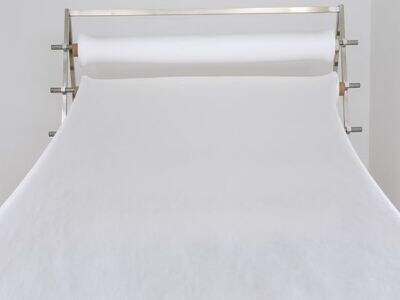PTFE & ePTFE—you don't get much more technical than that. But don't worry! They are different kinds of materials that we have a high utility of in our daily lives. PTFE is polytetrafluoroethylene, and ePTFE is expanded polytetrafluoroethylene. Good, Let's parse this so we fully understand it!
What is PTFE?
Teflon is a special kind of plastic that has many purposes. PTFE is found in nonstick pans, which makes cooking easier because the food does not stick to the pan. This allows us to prepare our favorite meals without fearing that they will burn or get stuck. In addition to cookware, PTFE is found in pipes, which transport water and other fluids. It is also used to insulate wires to protect them from heat and damage. This air vent plug valve is important since PTFE is very slippery, which is why PTFE works so good in these applications.
What is ePTFE?
Now, let’s talk about ePTFE. ePTFE is derived from PTFE but is slightly different because it has the designation of being a membrane. Which means it has really small holes in it which you can't see with your eyes. We use ePTFE in critical medical structures, like heart valves. The vent plug micro heart valves allow our blood to flow correctly in our bodies. Outdoor clothes also use ePTFE. When we’re hiking or camping, of course, we want to be dry, and ePTFE keeps water at bay and our body’s breathability. It is really important for comfort when we stay outside.
Comparing PTFE and ePTFE
PTFE and ePTFE are similar materials, though there are some key differences. PTFE is incredibly slippery, meaning that things are difficult for it to stick. It is also high-heat resistant and will not melt or lose shape. So, it creates a strong material that isn't easy to break, which is really really useful in many circumstances.
Subsequently, in comparison ePTFE does share some good qualities with PTFE, but at the same time, it also has that unique porous structure. Those tiny holes let air and water vapor through too, making them ideal for clothes that need to be breathable and waterproof. That’s why when you wear ePTFE clothes, you know that you will feel safe and dry, even when it acid battery vent plug floater is raining outside. And ePTFE is biocompatible, meaning it is safe to use inside the human body without harming it.
Good and Bad Characteristics of PTFE and ePTFE
PTFE and ePTFE have a number of improvements even though they also have a few drawbacks. Because PTFE is so durable and can handle a fair amount of heat, it works well in harsh environments, such as factories or kitchens. It is also highly nonreactive, so it won’t break down when it touches chemicals. By contrast, PTFE can't be used inside body, it isn't biocompatible — meaning that it could do harm if introduced in a human.
By contrast, ePTFE is biocompatible, meaning that it can be safely incorporated in medical devices, such as heart valves. Its porous structure is ideal for outdoor wear since it makes a barrier to water but allows our bodies to breathe. But due to those holes, ePTFE is not as strong or durable as PTFE. Before you make a choice about which material is best for your needs, consider what you actually need.
PTFE or ePTFE, Which One to Choose?
The comparison between PTFE and ePTFE is entirely applicational in nature. Otherwise, if you need a strain tolerant that withstands high temperature, then PTFE is preferable. Ideal for heavy-duty tasks where durability matters. But if you want something which is breathable as well as didn't get wet so much especially when you are outdoor or for any medical usages, then ePTFE would be the best option.
Though neither a complete list nor exhaustive, PTFE and ePTFE have applications in:
There are many real-world applications we come across daily that utilize PTFE and ePTFE. Richard Davis, Science Based Health Chemists Example: PTFE, a polymer, is used in nonstick coatings for pots and pans to help make cooking and cleaning easier. It is also used as insulation for wires, allowing them to be protected from heat and damage. PTFE is utilized in pipes for industrial applications due to its high strength and resistance to harsh chemicals.
ePTFE is biocompatible, which is why it is also used to line medical implants such as heart valves. That means doctors can use it to keep people healthy. Another application for ePTFE is clothing, for example waterproof jackets and pants. The tiny holes of ePTFE allow water vapor to escape, making it breathable while blocking rain and moistures.
Finally, PTFE and ePTFE are two distinct materials with their own characteristics. PTFE is tough and long-lasting, which makes it ideal for demanding conditions. By contrast, ePTFE is both breathable and waterproof, so is used in outdoor clothing and medical implants. Deciding between the two, you should consider what you require. PTFE is ideal for harsh environments, whereas ePTFE makes sense for activities where comfort and safety is paramount. Unique is a manufacturer of premium PTFE and ePTFE membranes for a variety of applications.
 EN
EN
 AR
AR
 BG
BG
 HR
HR
 CS
CS
 DA
DA
 NL
NL
 FI
FI
 FR
FR
 DE
DE
 EL
EL
 HI
HI
 IT
IT
 JA
JA
 KO
KO
 NO
NO
 PL
PL
 PT
PT
 RO
RO
 RU
RU
 ES
ES
 SV
SV
 TL
TL
 ID
ID
 LV
LV
 SR
SR
 SK
SK
 SL
SL
 UK
UK
 VI
VI
 SQ
SQ
 HU
HU
 TH
TH
 TR
TR
 AF
AF
 MS
MS
 GA
GA
 CY
CY
 BE
BE
 LA
LA

